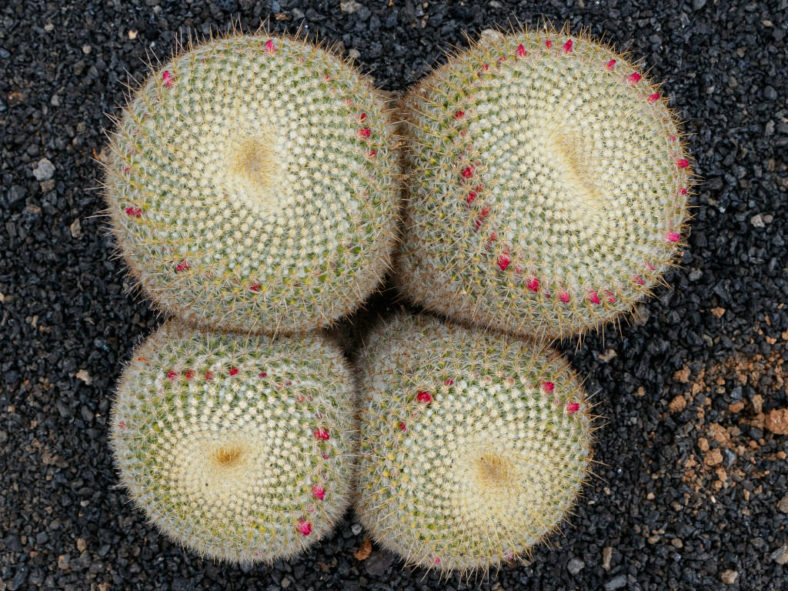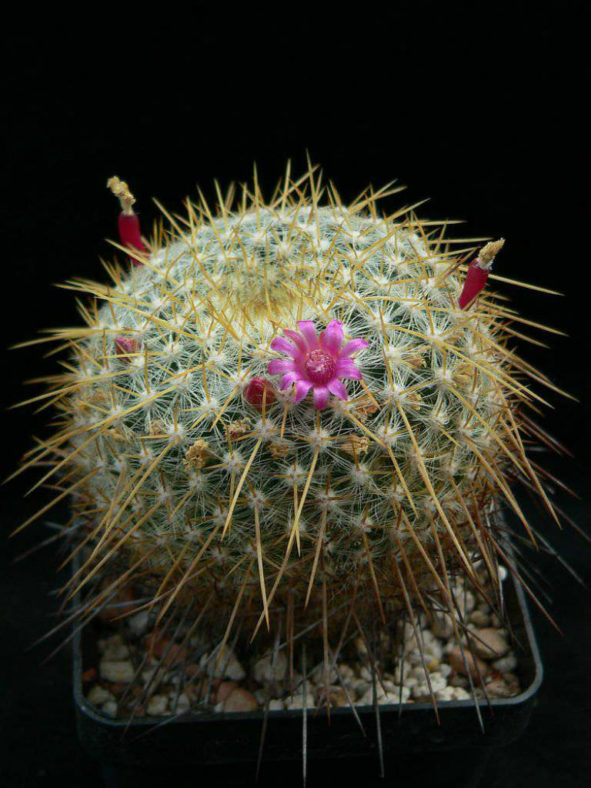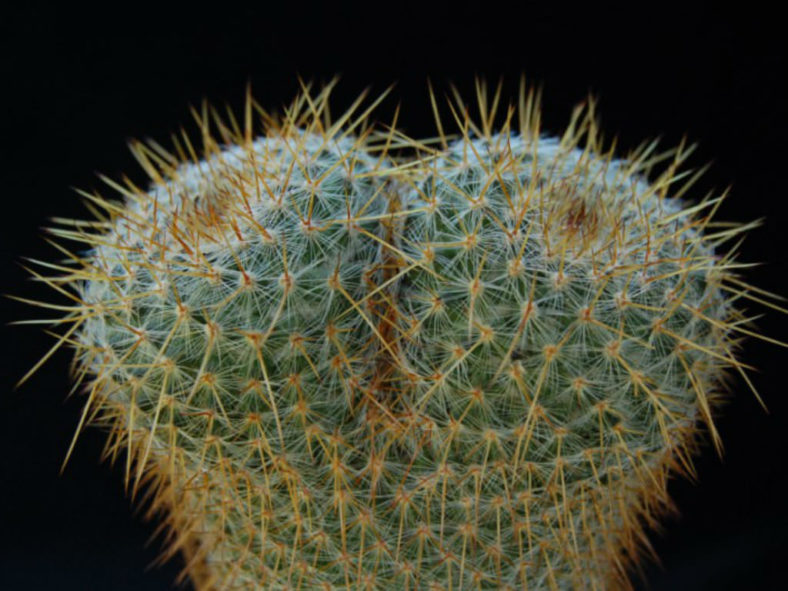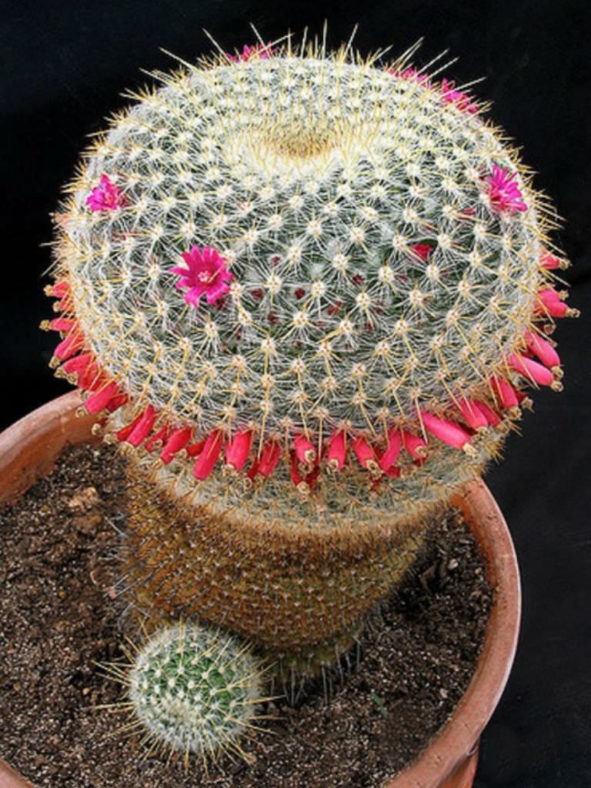Scientific Name
Mammillaria muehlenpfordtii C.F.Först.
Synonym(s)
Cactus muehlenpfordtii, Mammillaria celsiana, Neomammillaria muehlenpfordtii
Scientific Classification
Family: Cactaceae
Subfamily: Cactoideae
Tribe: Cacteae
Subtribe: Cactinae
Genus: Mammillaria
Etymology
The specific epithet "muehlenpfordtii" (pronounced "mew-len-FORDT-ee-eye") honors Philipp August Friedrich Mühlenpfordt (1803-1891), a German botanist.
Origin
Mammillaria muehlenpfordtii is native to Mexico. It occurs in Querétaro, Guanajuato, and San Luis Potosí at elevations between 5,580 and 7,880 feet (1,700 and 2,400 m).
Description
Mammillaria muehlenpfordtii, formerly known as Mammillaria celsiana, is a small cactus with spherical to short cylindrical stems with conical to pyramidal tubercles, each tipped with a small woolly areole and a cluster of white and yellow spines. The stems can grow up to 8 inches (20 cm) tall and up to 6 inches (15 cm) in diameter, initially solitary, later dividing dichotomously at the apex. They can be dark green, blue-green, or grey-green. The apex of the stems is slightly sunken and woolly. Each areole bears 24 to 50 bristle-like, white or yellowish radial spines measuring up to 0.15 inches (0.4 cm) long and usually 4 stiff, pale yellow central spines with a brown tip, measuring up to 1.6 inches (4 cm) long.
The flowers are small, shiny, carmine to rose-red, with reddish-brown outer petals, and appear in a ring near the top of the stem in summer. The fruits are red, club-shaped, and contain tiny brown seeds.

How to Grow and Care
Hardiness: USDA hardiness zones 9b to 11b: from 25°F (-3.9°C) to 50°F (10°C).
To encourage better flowering, allow the plants a cooling period in winter and suspend watering. Unlike many other cacti, which use their ribs as storage devices, Mammillaria feature raised tubercles, from which spines emerge. When you water, the tubercles expand to increase water storage. The flowers emerge from the axils of these tubercles on the previous year's growth, which accounts for their interesting halo effect. The cactus mustn't be exposed to prolonged dampness and standing water. Never let your cactus sit in a dish of water. Lastly, ensure to fertilize during the growing season for the best results.
Repot as needed, preferably during the warm season. To repot Mammillaria, ensure the soil is dry before repotting, then gently remove the pot. Knock away the old soil from the roots, removing any rotted or dead roots. Treat any cuts with a fungicide. Place the plant in its new pot and backfill it with potting soil, spreading the roots out as you repot. Leave the plant dry for a week or so, then begin to water lightly to reduce the risk of root rot.
Learn more at How to Grow and Care for Mammillaria.
Links
- Back to genus Mammillaria
- Succupedia: Browse succulents by Scientific Name, Common Name, Genus, Family, USDA Hardiness Zone, Origin, or cacti by Genus
Photo Gallery
Click on a photo to see a larger version.


